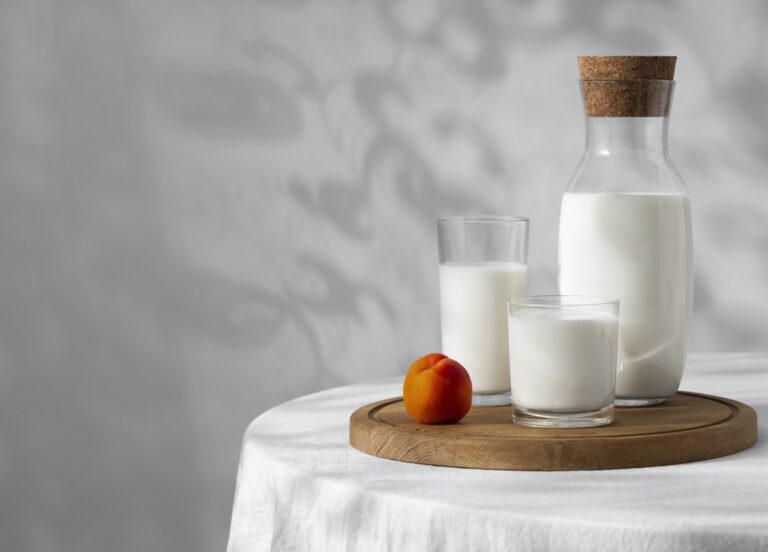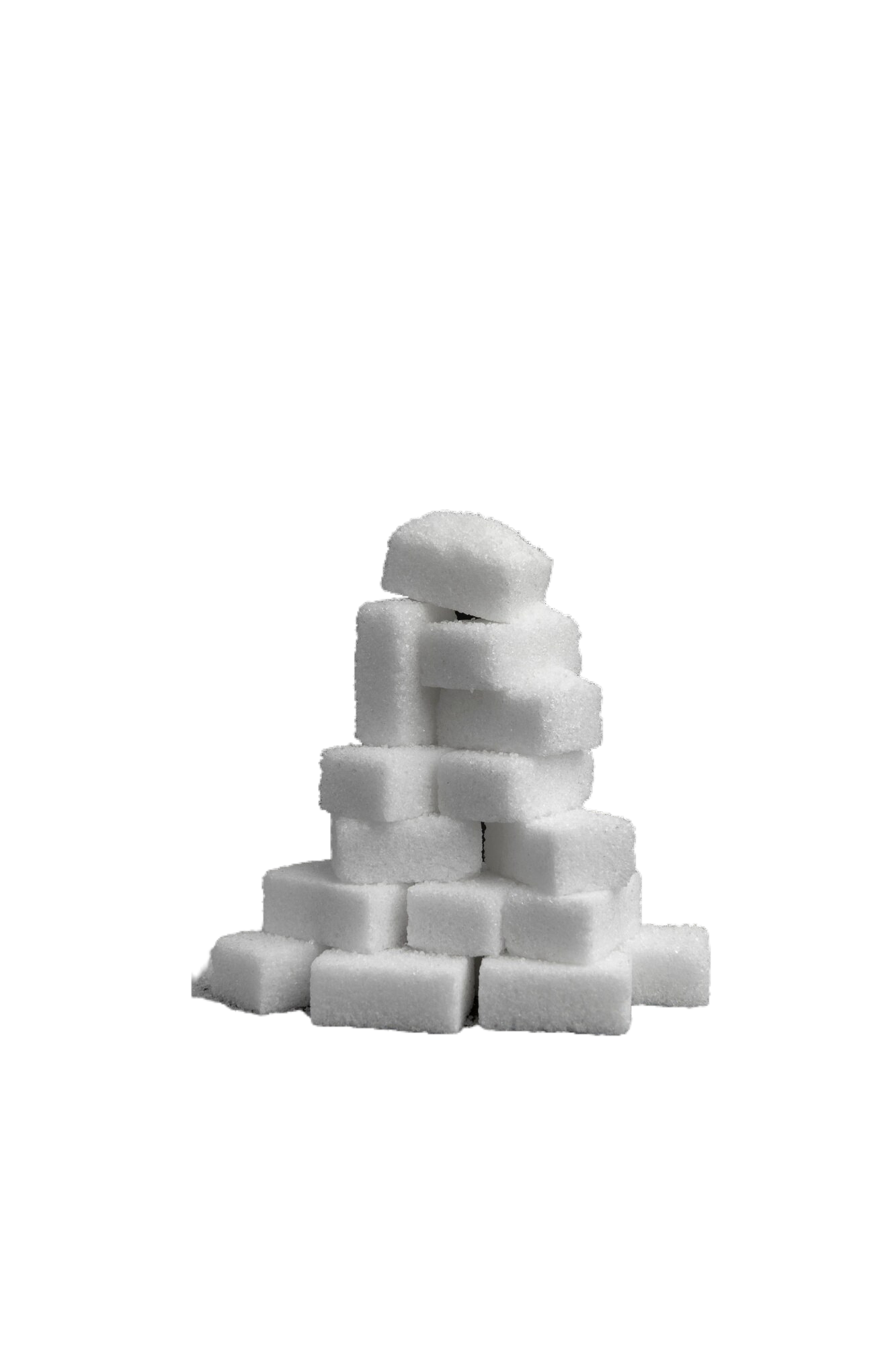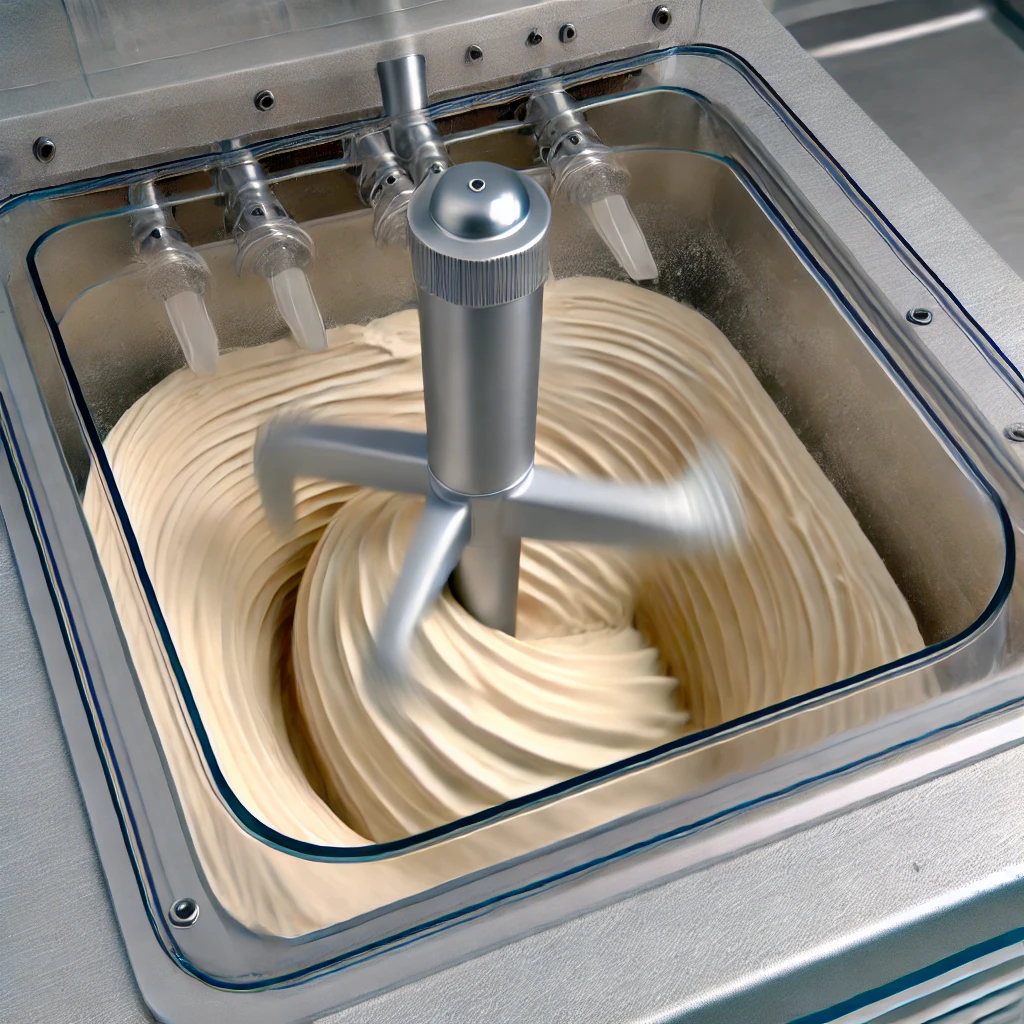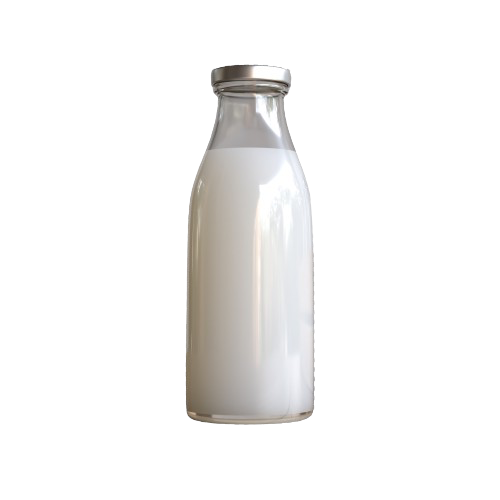
You may also like
- All Posts
- Blog
- Company news
- Equipment
- Recipe
- Training
Categories
When making exceptional ice cream, the choice of dairy is crucial. High-quality whole milk and cream not only serve as the foundation of your ice cream but significantly influence its flavor, texture, and overall quality.
There are numerous benefits of using whole milk and cream with a high fat content. These fat particles enhance the creamy texture that ice cream enthusiasts love, improve the stability of the ice cream during freezing, and are crucial for encapsulating and delivering rich, deep flavors.
Furthermore, opting for organic milk and cream ensures that the dairy is free from synthetic pesticides and fertilizers, which aligns with healthier eating practices and offers a cleaner, more natural taste.
The Science of Fat Content in Ice Cream Making
Understanding the role of fat molecules in ice cream is essential for any ice cream maker aiming to produce a superior product. Fats play a pivotal role in the overall sensory experience of ice cream by impacting its texture, stability, and mouthfeel. This section will explore the scientific underpinnings of fat content in ice cream and discuss the optimal fat ranges needed to achieve the best results for various types of ice cream, such as premium and gelato.
Role of Fat Molecules: Fat molecules in ice cream are crucial for creating a smooth and creamy texture. They help minimize the formation of large ice crystals during freezing, essential for achieving a soft, scoopable consistency. Fat also acts as a stabilizer for the air bubbles incorporated during the churning process, enhancing the ice cream’s volume and lightness. Additionally, fat is a key carrier of flavors, helping to distribute taste more evenly and allowing the flavor to linger longer on the palate.
Optimal Fat Content Ranges:
- Premium Ice Cream: Typically contains between 14% to 18% fat, which provides a rich and luxurious mouthfeel. This higher fat content is ideal for creating a dense, creamy texture that premium ice cream is known for.
- Gelato contains slightly less fat, around 4% to 8%. Its lower fat content highlights the flavors, as less fat coats the palate, allowing the true flavors of the gelato to shine through more vividly.
- Standard Ice Cream usually has a fat content of about 10% to 14%, balancing creaminess with cost-effectiveness. This makes it suitable for broad commercial distribution without compromising too much on texture and flavor.
By manipulating fat content according to the type of ice cream produced, makers can significantly influence the final product’s quality and consumer appeal. Whether aiming for premium ice cream’s indulgent richness or artisan gelato’s intense flavour profile, understanding and adjusting the fat content is vital to achieving both the desired taste and textural characteristics.
Benefits of High-Quality Dairy in Ice Cream Production
Utilising high-quality dairy products such as milk and cream is fundamental in crafting exceptional ice cream that stands out for its superior mouthfeel and smoother texture. This section delves into the benefits of premium dairy and the science behind how fat content enhances textural qualities and significantly improves ice cream’s flavour delivery.
Enhancing Mouthfeel and Texture: High-quality milk and cream, characterised by their freshness and higher fat content, are crucial for achieving a luxuriously creamy mouthfeel in ice cream. The fat in the dairy acts as a natural emulsifier, which helps to integrate tiny air bubbles into the ice cream during the churning process. These air bubbles make the ice cream lighter and softer, while the fat coats the ice crystals that form during freezing, reducing their size and creating a smoother texture. The result is ice cream that feels silky and smooth as it melts in your mouth, providing an indulgent eating experience.
Scientific Basis for Flavor Enhancement: The fats in high-quality dairy enhance flavour. Fat molecules are excellent at absorbing and retaining aromatic compounds, which are responsible for the flavors in ice cream. When you eat ice cream, the fat melts at body temperature, gradually releasing these trapped flavors in a way that allows them to linger longer on your palate. It intensifies the taste perception and makes the flavor experience more satisfying and complex. Furthermore, fats help to distribute these flavors more evenly throughout the ice cream, ensuring that each spoonful is as delicious as the last.
Using superior dairy products in ice cream production is not just about achieving a premium quality in terms of taste and texture; it’s also about elevating the overall sensory experience that makes ice cream a universally loved dessert. By understanding and harnessing the properties of high-quality milk and cream, ice cream makers can create products that are not only rich and smooth but also profoundly flavorful and satisfying.

The Advantages of Using Organic Dairy in Ice Cream Making
Opting for organic milk and cream in ice cream production offers distinct advantages that impact the environment and consumer health while enhancing the final product’s qualities.
Environmental and Health Benefits: Organic dairy farming practices are designed to support ecosystem sustainability, promote biodiversity, and reduce pollution. These practices prohibit synthetic hormones and antibiotics in dairy cows fed with organic feed. Organic milk and cream are free from potentially harmful residues for consumers, making them a healthier choice. Additionally, organic dairy farming typically involves higher animal welfare standards, which many consumers find essential.
Taste and Texture Differences: Organic milk and cream often offer a superior taste profile to non-organic options. It can be attributed to the varied diet of the cattle, which can include a broader range of natural grasses and herbs, influencing the flavour nuances of dairy products. These subtle flavours can significantly enhance the depth and complexity of ice cream, providing a richer and more authentic dairy taste.
Moreover, organic milk and cream tend to have higher levels of beneficial fatty acids due to the cattle’s pasture-based diet. This contributes to a better nutritional profile and impacts the texture of the ice cream. The presence of these natural fats helps create a creamier, smoother, and more velvety texture in ice cream, which is crucial for a premium product.
Choosing Organic Dairy for Ice Cream: For ice cream makers, using organic dairy is a commitment to producing a better-tasting, healthier, and environmentally responsible product. Consumers are increasingly looking for sustainably sourced food products that are free from unnecessary additives and chemicals. By choosing organic milk and cream, ice cream producers can meet these demands while offering a product that stands out for its quality and craftsmanship.
Flavor Delivery and Molecular Gastronomy in Ice Cream Making
Understanding the molecular gastronomy behind ice cream production is essential for mastering the art of flavor delivery. This section delves into how the molecular composition of high-fat dairy affects flavor absorption and release and how these processes enhance the overall sensory experience of consuming ice cream.
Molecular Composition and Flavor Absorption: High-fat dairy products, such as cream and whole milk, are integral to ice cream for more than just their texture-enhancing properties. Fat molecules are naturally hydrophobic, repelling water but readily absorbing fat-soluble flavor compounds. This capability allows them to capture and hold complex flavors derived from various ingredients, such as vanilla, chocolate, fruits, and nuts. During the ice cream-making process, as the fat emulsifies, it encapsulates these flavors, integrating them thoroughly throughout the product.
Release of Flavors in Ice Cream: When ice cream is consumed, the fat content significantly impacts how flavors are perceived. As ice cream melts in the mouth, the fat molecules begin to break down, gradually releasing the trapped flavors. This slow release allows for a more prolonged and intense flavor experience as the taste buds continue to encounter new flavor notes. The melting fat also coats the palate lightly, which smooths the texture and distributes the flavor more evenly across the taste receptors.
Enhancing Sensory Experience Through Molecular Gastronomy: The principles of molecular gastronomy apply particularly well to ice cream. By manipulating the molecular structure of dairy fats, ice cream makers can create texture and flavour-release variations that significantly enhance the eating experience. For example, adjusting the size and stability of fat globules can modify how quickly flavors are released, creating ice cream that delivers a complex, evolving taste profile as it melts.
Understanding and applying these molecular concepts allows ice cream makers to fine-tune their recipes to achieve specific sensory effects, making the experience of eating ice cream enjoyable and memorable. Whether it’s the initial impact of flavor, the richness of the texture, or the lingering aftertaste, the mastery of molecular gastronomy in ice cream production can elevate a simple dessert into a gourmet experience.
In conclusion, the interplay between high-fat dairy’s molecular composition and molecular gastronomy’s sophisticated techniques opens up vast possibilities for enhancing flavor delivery in ice cream. By embracing these scientific insights, ice cream makers can craft products that taste better and provide a more engaging and delightful sensory experience.
Sourcing High-Quality Dairy for Ice Cream Making
Selecting the best milk and cream is essential for anyone serious about creating exceptional ice cream, whether at home or on a commercial scale. High-quality dairy enhances the flavor and texture of your ice cream and contributes to the final product’s overall richness and sensory appeal. Here are practical tips to help you identify and choose the finest dairy products for your ice cream-making needs.
Understanding Dairy Quality:
Source Locally: Freshness can significantly impact the quality of dairy products. Sourcing milk and cream from local dairies supports local businesses and often ensures a fresher product, as the time from farm to table is minimised.
Check Fat Content: For richer, creamier ice cream, look for milk and cream with higher fat content. Premium ice cream typically requires cream with a fat content of around 36-40%, while lower-fat options might use milk with a fat content of about 10-18%.
Organic Certification: Organic dairy products are made without the use of antibiotics, hormones, or pesticides, which can affect both the quality and the taste of the milk and cream. Organic certification also implies higher welfare standards for dairy animals, which can influence the milk quality produced.
Evaluating Dairy Products:
Taste Test: Flavor is a direct indicator of quality. Taste the dairy products before purchasing in bulk to ensure they meet your freshness and flavor profile standards.
Inspect Packaging: Quality dairy products should be packaged in well-sealed containers that protect the contents from air and light, both of which can degrade the quality and flavor of milk and cream.
Review Processing Methods: Look for dairy products that have undergone minimal processing. Ultra-pasteurised products, while having a longer shelf life, often lack the fresh taste and rich texture needed for premium ice cream.
Sourcing for Commercial Production:
Establish Relationships with Suppliers: Building a good relationship with dairy suppliers ensures consistency in quality and delivery reliability. Regular communication can also allow you to request specific processing methods or fat contents tailored to your ice cream recipes.
Bulk Purchasing: Consider bulk purchases directly from dairy farms or specialised distributors for commercial operations. This often results in cost savings and guarantees a steady supply of high-quality ingredients.
Quality Assurance Programs: Partner with suppliers with robust quality assurance programs. These programs include regular product testing and certification, which can provide peace of mind about the dairy’s quality.
By following these tips, home artisans and commercial producers can ensure they are using the best possible dairy for their ice cream, which is a fundamental step in crafting a delicious and memorable product. High-quality dairy improves the end product and enhances the customer’s eating experience, setting your ice cream apart from competitors.
The Critical Role of High-Quality Dairy in Ice Cream Excellence
Choosing the suitable dairy is not just a step but a cornerstone in making high-quality ice cream. The type of milk and cream you use significantly influences everything from the texture and flavor to the overall sensory experience of the final product. As we have explored, high-fat content and organic sources can dramatically enhance the richness and mouthfeel of your ice cream, making it a gourmet treat that stands out in the market.
We highly recommend experimenting with different types of milk and cream to discover the perfect match for your specific ice cream recipes. Each variety brings unique characteristics, and finding the right balance that suits your flavor profiles and textural preferences can transform your ice cream into an extraordinary product. Whether you opt for full-fat, reduced-fat, or specialised organic options, the impact of these choices on your ice cream will be noticeable and rewarding.
We invite all ice cream enthusiasts, whether home cooks or professional makers, to share their experiences with different dairy products. How has the choice of dairy impacted your ice cream creations? What discoveries have you made that have elevated your recipes?
Please share your stories in the comments below, and let’s learn from each other!
- All Posts
- Blog
- Company news
- Equipment
- Recipe
- Training

Discover the best sugar for ice cream recipes. Learn the best sugar practices for perfect ice cream.

Discover the best sugar for ice cream recipes. Learn the best sugar practices for perfect ice cream.

Discover the best sugar for ice cream recipes. Learn the best sugar practices for perfect ice cream.

The secrets of ice cream overrun to improve texture, quality, and profitability. Tips for optimizing overrun in ice cream production.

High-quality whole milk and cream serve as the foundation of your ice cream but significantly influence its flavor, texture, and…

These easy-to-make crumbs bring the fun of a birthday cake to any treat. Learn how to whip up this playful…

